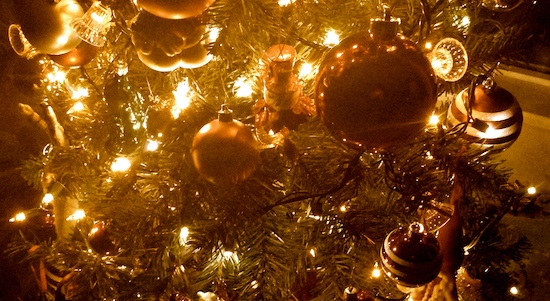I’ve recently been reading several histories of Christmas. I wanted to learn a little bit more about what Christmas of the past was like, how the celebrations have changed, and where so many now common traditions came from. You may be surprised to learn that the Christmas we know today is a relatively new phenomenon, especially in America. In fact, most of the traditions we now revere each year have been practiced for less than 150 years in the U.S. (They would have been new and strange to my great-great-grandfather which is hard to imagine now).
Here’s a few fun facts I’ve learned along the way that you may not know about the most popular holiday of the year:
Americans Refused to Celebrate Christmas
In 1776, Americans were against Christmas. They saw it as a British tradition and since we were about to be at war with Great Britain, most Americans were against the celebration. Also, Christmas had traditionally been a ruckus affair with binge drinking, lewd behavior, and class warfare being the most common ways to celebrate. George Washington’s crossing of the Delaware during Christmas was specifically done because he knew the Hessian troops (German mercenaries fighting for the British) would be celebrating the holiday.
It wasn’t until 1870 when Christmas was declared a national holiday following the bloody Civil War and started to become what we know today. But it was much different from the British tradition. Americans had reinvented the holiday as a peaceful day of charity and giving (inspired by Dicken’s Christmas Carol and several other author’s writings on what a traditional Christmas should be).
Christ’s Birth Wasn’t Celebrated Until 300+ years after his Death
It wasn’t until 400 AD that the birth of Jesus became a recognized holiday by the church. Most people know that December 25th is not actually when the birth of Jesus occurred (he was born in the spring) but it did coincide with another popular holiday, Saturnalia, celebrated by the Romans as well as many Winter Solstice holidays celebrated by pagan groups around December 25th. So the church chose to place Christmas on this date to satisfy its growing membership who still wanted to celebrate their holidays.
Saturnalia (the worship of the god Saturn) was celebrated by appointing someone in the town as The Lord of Misrule. This person was authorized to lead the rest of the town who was obligated to follow in mischievous activities such as vandalism, public disobedience, extortion of the rich for money and gifts, and drunkenness.
Coca-Cola Popularized the Image of Santa Claus we Know Today
In 1822, Clement Clarke Moore (a minister) wrote a poem for his daughters called ‘Twas the Night Before Christmas. His poem is probably most responsible for laying the foundation for what we know Santa Claus to be today. But in the 1930’s, Coca-Cola company commissioned artist Haddon Sundblom to draw images of Santa Claus for their advertisements that look very close to the way Santa is depicted today. While Coca-Cola was not the first to have Santa dressed in red and white (the same colors as their logo & brand), they had the marketing reach to educate the masses and Santa became hugely important to Christmas festivities.
Santa Claus had been around for a long time before Coca-Cola, but their marketing popularized him to the point that he’s remained virtually unchanged in the now “classic” way he is depicted even up to today with the red and white suit, rosy cheeks, long white beard, and Christmas hat.
